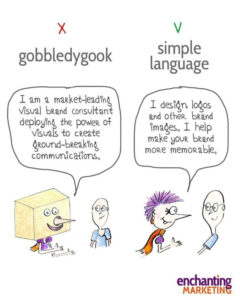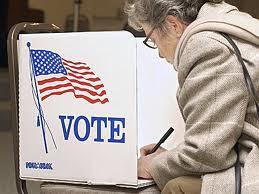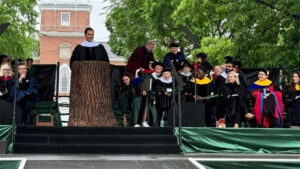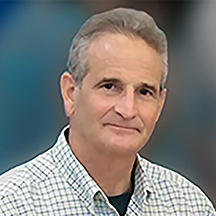Sweet No. 18
While Boston Celtics fans are celebrating their 18th NBA championship (first since 2008) — more than any other NBA franchise — it’s too often overlooked the uplifting way they have led the way in integrating professional basketball. The Celtics were the first NBA franchise to draft an African American player — Chuck Cooper in 1950. They became the first NBA team to send an all-black starting lineup onto the floor. The man responsible was the architect of the Celtics dynasty: Red Auerbach. “I wasn’t even aware of it,” Auerbach once said about his historical lineup breakthrough in 1964. “They brought it to my attention later on. All we were trying to do here, all the time, is play the guys that, in our opinion, whether I’m coaching or someone else is coaching, are going to win the ballgame. That’s all.” The Celtics made Russell the league’s first African American head coach. Unfortunately, it’s true that the Boston Red Sox dragged their feet on integration, but the Celtics were polar opposites, and their unparalleled success serves as testimony to the idea that doing the right thing is also the smart thing. When I was growing up in Boston, winning came almost too easy, and we expected it virtually every year. My cousins Mark and Paul Sheinkopf are fanatical fans and have kept the season tickets their father (my uncle Seymour, who lived to be 102) first purchased in 1967 traveling to crucial games including the clinching playoff game vs. Dallas from Maryland and New York. Celtic Nation is rightfully enjoying success on the court but is also immensely proud of our inspiring leadership championing social justice.
Fundrasing Keys

From the sagest of our profession’s sages, Jim Langley, President, Langley Innovations, here is an insightful list of the core drivers of resource development success:
- Committing to building and sustaining relationships over decades.
- Seeing that the long work is not more money but a stronger community of shared purpose.
- Clarifying where money will make a difference.
- Living up to your promises and seeing your commitments through.
- Constantly working the circuit, listening to current and prospective donors, searching for a broader coalition.
- Acknowledging and correcting mistakes.
- Crossing deserts in search of the occasional oasis.
- Realizing that you never arrive, you never have a pat hand.
- Striving to give more to the future than you inherited from the past.
Empathy

A seminal study from 2011 led by Professor Sara Konrath, Ph.D., a social psychologist specializing in empathy and altruism at the Indiana University Lilly Family School of Philanthropy, found that empathy among Americans had taken a nosedive, with U.S. college students in 2009 scoring 40% lower than students in the late 1970s. These early findings led to media headlines proclaiming, “the end of empathy.” The original study posited multiple theories – including changes in media and technology, changing parenting and family practices, and increasing expectations of success – as possible explanations for what appeared to be a general decline in American compassion and kindness. Fast forward to 2024: An update to that original study finds that empathy is increasing among young Americans since 2008, almost rising to levels similar to the highs of the 1970s. Late Millennials and emerging Gen Zs are showing increases in empathy, as compared with earlier generations, countering negative stereotypes about today’s youth.
The updated study also underscores that empathy is not predetermined; it is a fluid trait that can grow or shrink, depending on one’s experiences, a phenomenon Konrath pointed out in the original study.
The new study examined trends in empathy across four decades using three different samples, including two nationally representative ones, and found broadly consistent patterns. Key findings:
- Changes in empathy over time in young Americans move in cycles and can go up and down. Most pertinently, both perspective taking (cognitive empathy) and empathic concern (emotional empathy) increased between 2008 and 2018, contradicting complaints that today’s youth lack empathy, and painting a more optimistic picture of late Millennials and Gen Z young adults.
- Economic variables don’t play a major role in empathy changes in U.S. youth — either to promote or impair empathy. Although the new studies show a sudden change around 2008 — the beginning of the Great Recession — the authors were able to rule out economic variables (like unemployment levels) as a potential cause for this dramatic shift.
- Changing interpersonal dynamics might play a larger role in these empathy fluctuations. Empathy was higher during times of higher loneliness. Konrath notes that when young people see loneliness and other difficulties around them, they may reach out with care and empathy. It’s also possible that their own experiences of loneliness may increase their hunger for social connection.
Be Your Own Boss

I waited a long time to hang my own shingle and have never enjoyed work so much. I am not alone. The Shopify-Gallup Entrepreneurship study finds that most Americans share the desire to be their own boss. More than six in 10 U.S. adults (62%) say they would prefer to be their own boss, while 35% would prefer to work as an employee for someone else. In addition, over half of those who want to be their own boss (52%) say they would be willing to accept at least a fair amount of financial risk to do so. The percentage who are risk tolerant is even higher, 70%, among aspiring entrepreneurs who are seriously considering starting a business. These results are based on a survey of more than 45,000 members of Gallup’s probability-based online panel, including samples of those who currently own a business, aspiring entrepreneurs who are seriously considering starting a business, and those who have not given serious thought to being a business owner. The survey measures interest in owning a business, motivations for doing so, and barriers to and resources for business ownership. The appeal of being one’s own boss and having the opportunity to earn more money tops the list of reasons why business owners say they started their own enterprise. Those are also the top motivators for aspiring entrepreneurs. Four in 10 people in each group also say that the desire for a more flexible work schedule is a key reason for wanting their own business.
Gobblygook

From Henneke Duistermaat, Principal, Enchanted Marketing, here’s timeless advice on crafting communication that will genuinely, personally and effectively connect with donor prospects and other friends. More specifically, here’s how to spot gobbledygook:
1. Imagine sitting in a cozy cafe with your favorite reader.
2. Read your content aloud.
3. Are you using the same words you’d use while drinking a cup of coffee together?
Write in simple, human language so your writing resonates more strongly. Human content wins all the time.
Listening Is Much More Than Hearing

The goal of fundraising is to earn the donor prospect’s trust. That isn’t possible without getting to know and understand their values, priorities and needs. This demands the highest level of genuine “active listening.” Eskin Fundraising Training is grateful to Jimmy LaRose and the National Development Institute for featuring our article, 10 Ways to Listen Your Way to a Major Gift. We hope our learning community of professional and volunteer non-profit leaders find the content of value as they champion their noble missions that touch, improve and save more lives by listening their way to major gifts.
Donor Voter Connection

Our thanks to Victoria Vrana, CEO of GlobalGiving, for powerfully dramatizing the threat visible in the alarming loss of everyday donors to both philanthropy and democracy. She underscores growing concerns about the decline in the number of individuals who donate. In the U.S., the share of households giving to charity has dropped from two-thirds in 2000 to less than half, although it’s possible people are making gifts of time and treasure outside of the 501(c)(3) structure. Still, the fact that fewer Americans support non-profits represents a threat to the social sector and the common good, including democracy itself. Recent research from the Do Good Institute and Generosity Commission reveals that individuals who donate or volunteer are more likely to vote. “Volunteering (for any cause, not just a political one) increases voter turnout probability by 12 percentage points, while giving increases voter turnout probability by 10.1 percentage points,” underscoring the connection between citizen philanthropy and a vibrant, participatory democracy. The decline in donor participation also disproportionately harms the small non-profits critical to society. These organizations often work at the heart of their communities and create the most relevant solutions. Non-profits increasingly face a two-pronged challenge: pursue financial stability by focusing on major donors and find ways to re-engage with everyday donors essential for maintaining a diverse and vibrant civil society. This is not just about preserving non-profit funding; it’s about upholding the democratic values embedded in philanthropy.
Fighting Hunger

MGM Resorts surpasses its 2025 goal, donating over 5 million meals since 2016 to combat food insecurity through its Feeding Forward program. MGM Resorts International also known as MGM Resorts, revealed today that since 2016, it has contributed 5 million meals to the community, thereby reaching its 2025 social impact and sustainability target significantly early. In the year 2023, the Company provided over 1.2 million meals to support individuals facing food insecurity in local areas. The five million meals were distributed via the MGM Resorts Feeding Forward initiative. A significant portion of these contributions came from grants to agencies dedicated to combating hunger, which in turn supplied meals to local charitable organizations. Additionally, the program included salvaging uneaten food from various stages of MGM Resorts’ food and beverage services and securely transporting these donations to communities throughout the U.S. where MGM Resorts has operations. The Feeding Forward program’s most groundbreaking feature is its system for donating prepared meals from buffets and events, tackling both the significant environmental issue of food waste and the societal problem of food insecurity. Food trays are rapidly cooled, packaged, and frozen using on-site blast chillers to maintain safe storage temperatures before being redistributed to the community. These meals are then delivered to Three Square Food Bank, added to their inventory, and distributed to those in need. Over 130 hunger relief organizations have accessed these prepared frozen meals through Three Square’s online platform.
Asian American Philanthropy

Asian Americans are the only major racial or ethnic group in the U.S that is majority immigrant. Many Asian Americans either grew up or spent considerable time in their Asian ancestral homeland, and many have immediate family members who still live there today. Amid these personal and family connections between Asian Americans and their ancestral homelands, researchers wanted to understand the financial and philanthropic ties they have to both the U.S. and their Asian origin countries. In Pew Research Center analysis of the 2022 American Community Survey, 54% of Asian adults report having immediate family members still living in their Asian origin country. Other key findings:
- Most Asian adults (67%) have given to a charitable organization in the U.S., their Asian country of origin or both places. Overall, they are about three times more likely to say they have volunteered or made a donation through a charity in the U.S. than one in their Asian origin country in the 12 months before the survey (64% vs. 20%).
- Regardless of whether Asian adults are immigrants or born in the U.S., most have given to a U.S. charity. More than 60% of each group say they have done so. However, immigrants are more likely than U.S.-born Asian adults to say they have given to a charity in their Asian country of origin (23% vs. 11%).
- Whether Asian Americans have given to charitable organizations is associated with how important religion is in their life. Asian adults who say religion is very important in their life are more likely than those who say it is not too or not at all important to have given to a charity in either of the places asked about.
- Filipino, Indian and Vietnamese adults in the U.S. are more likely than other Asian origin groups to say they have sent remittances in the 12 months before the survey. Chinese and Japanese adults in the U.S. are among the least likely to say so.
- Among Asian adults who have sent remittances, the most common reasons for doing so are to help with ordinary expenses (63%) and health expenses (50%). Reasons vary somewhat across Asian origin groups, education and family ties to one’s ancestral homeland.
- In 2021, Asian Americans’ places of origin collectively received about $63 billion in remittances from the U.S. Among the biggest recipients were the six most common origin countries for Asian Americans — India, the Philippines, China, Vietnam, South Korea and Japan — which received about $55 billion of these remittances.
On Bookshelf: An Unfinished Love Story

Dick and Doris Goodwin were married for 42 years and married to American history even longer. In his twenties, Dick was one of the brilliant young men of John F. Kennedy’s New Frontier. In his thirties he both named and helped design Lyndon Johnson’s Great Society and was a speechwriter and close advisor to Robert Kennedy. Doris Kearns was a 24-year-old graduate student when selected as a White House Fellow. She worked directly for Lyndon Johnson and later assisted on his memoir. Over the years, with humor, anger, frustration, and in the end, a growing understanding, Dick and Doris had argued over the achievements and failings of the leaders they served and observed, debating the progress and unfinished promises of the country they both loved. The Goodwins’ last great adventure involved finally opening the more than 300 boxes of letters, diaries, documents, and memorabilia that Dick had saved for more than 50 years. They soon realized they had before them an unparalleled personal time capsule of the 1960s, illuminating public and private moments of a decade when individuals were powered by the conviction they could make a difference; a time, like today, marked by struggles for racial and economic justice, a time when lines were drawn and loyalties tested. Their expedition gave Dick’s last years renewed purpose and determination. It gave Doris the opportunity to connect and reconnect with participants and witnesses of pivotal moments of the 1960s. And it gave them both an opportunity to make fresh assessments of the central figures of the time — John F. Kennedy, Jacqueline Kennedy, Martin Luther King Jr., Robert Kennedy, Eugene McCarthy, and especially Lyndon Johnson, who greatly impacted both their lives. In An Unfinished Love Story, the voyage of remembrance brings unexpected discoveries, forgiveness, and the renewal of old dreams, reviving the hope that the youth of today will carry forward this unfinished love story with America.
Celebrity Corner

Is there anything Roger Federer can’t do? The Swiss maestro set high standards on the court during his illustrious career and was one of the most beloved players on the court. After he called time on his illustrious career back in 2022, Federer has actively been involved in philanthropic activities. Recently, the decorated Swiss personality achieved yet another feat, this time for his charitable work. Federer was honored with the Doctor of Humane Letters from Dartmouth University for his massive work to make society a better place to live. The Swiss maestro, through the Roger Federer Foundation, has pledged more than $100 million for philanthropic work, helping children of backward regions to gain access to basic needs like food and shelter. Although a massive honor for his philanthropic activities worldwide, Federer looked nervous while receiving the doctorate. The tennis legend also got emotional, denoting how down-to-earth he is despite the fact that he has achieved so much in his career.
Quiz: Strongest State Economies
To determine which states are pulling the most weight in moving the U.S. economy forward, WalletHub compared the 50 states and the District of Columbia across 28 key indicators of economic performance and strength. The data set ranges from GDP growth and the unemployment rate to startup activity and the share of jobs in high-tech industries. Match the following scores with their respective states (higher is better). Answers are shown at the bottom of the page.
1. Connecticut a. 36
2. Florida
3. Iowa
4. Massachusetts d. 62
5. Washington e. 71
Stratagems is published monthly by Jim Eskin, Founder of Eskin Fundraising Training, LLC. We offer workshops and customized training sessions for board members, staff and volunteers of non-profit organizations of all kinds and sizes. For details about our services and information, or to find out how to schedule a training session for your organization, visit our website. Follow our events on Facebook, and read more articles about philanthropy on our LinkedIn page.

Jim Eskin, Founder
Eskin Fundraising Training
Email: [email protected]
Cell: 210.415.3748
www.eskinfundraisingtraining.com
ANSWERS TO THIS MONTH’S QUIZ: 1=b, 2=c, 3=a 4=d, 5=e |



